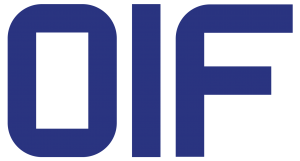OIF ANNOUNCES READ-OUT EVENT FOR SDN TRANSPORT API INTEROPERABILITY DEMO TO BE HELD AT NGON OPTICAL MASTERCLASS
Demo aimed at accelerating commercialization of Transport SDN
Fremont, Calif.—May 22, 2018 – The OIF (Optical Internetworking Forum) today announced plans for its public read-out events to present the results of the 2018 Software-Defined Networking (SDN) Transport Application Programming Interface (T-API) interoperability demonstration. This year’s demo, in collaboration with MEF, is focused on accelerating the commercialization of Transport SDN through validating the industry leading T-API 2.0 northbound interface (NBI) from the Open Networking Foundation (ONF). ClicktoTweet
The multi-vendor demo includes testing new dynamic behavior use cases and deployment scenarios by network operators CenturyLink, China Telecom, SK Telecom and Telefónica. Participating vendors include ADVA, Coriant, Infinera, NEC/Netcracker, Nokia and SM Optics. Centre Tecnològic Telecomunicacions Catalunya is the participating academic and/or research institution and TELUS Communications is participating as a consulting network operator.
This year’s demo incorporates service provisioning scenarios at the LSO Presto reference point in the MEF LSO architecture, using the MEF NRP Interface Profile Specification (MEF 60), which defines T-API extensions in support of Carrier Ethernet services.
“The OIF multi-vendor interop testing is particularly important to Telefónica’s network transformation. We are anxious to validate T-API as the standard NBI for Transport SDN and announce the results in June,” said Juan Pedro Fernández Palacios, Telefónica.
The results of the demo will be presented during a featured workshop and keynote presentation at NGON & DCI Europe 2018, the world’s leading strategic and technical optical networks event being held in Nice, France, and during two private events at participating network operator labs.
Public Event: NGON & DCI Europe 2018 (Nice, France), Tuesday, June 26, 2018, 10:00am-12:00pm
Optical Masterclass: Speakers will discuss how OIF is assuring interoperability in open, agile next generation optical networks and present updates on critical projects including CEI-56G and CEI-112G, FlexE 2.0, 400ZR and Transport SDN.
Agenda:
- Welcome & Overview – Dave Brown, OIF President, Nokia
- Physical & Link Layer Working Group (PLL WG) Overview – Karl Gass, OIF PLL WG Vice Chair Optical, OIF
- FlexE 2.0 – Dave Ofelt, OIF PLL WG Vice Chair Protocol, Juniper Networks
- Networking Projects Overview – Lyndon Ong, OIF Market Awareness & Education Committee Co-Chair – Networking, Ciena
- SDN Transport API Work/Interoperability Demonstration – Jonathan Sadler, OIF Board Member and Networking Interoperability Working Group Chair, Coriant
Additionally, Palacios, Head of Unit at Telefónica, will discuss the demo results and present use cases during his keynote presentation – Transport API: Standardization status, interoperability tests and use cases – on June 27th at NGON.
Invitation-Only: CenturyLink and China Telecom
Two invitation-only read-out events will be held in July. CenturyLink will hold a private read-out event on July 10 in Denver, Colorado and China Telecom will host a private read-out in Beijing on July 19. Members of the media and analyst community interested in attending, please contact leah@wilkinson.associates.
A technical white paper and an executive summary of the demo result will be available in August.
Additional information can be found at http://www.oiforum.com/meetings-and-events/2018-oif-sdn-t-api-demo/
About the OIF
The OIF facilitates the development and deployment of interoperable networking solutions and services. Members collaborate to drive Implementation Agreements (IAs) and interoperability demonstrations to accelerate and maximize market adoption of advanced internetworking technologies. OIF work applies to optical and electrical interconnects, optical component and network processing technologies, and to network control and operations including software defined networks and network function virtualization. The OIF actively supports and extends the work of national and international standards bodies. Launched in 1998, the OIF is the only industry group uniting representatives from across the spectrum of networking, including many of the world’s leading service providers, system vendors, component manufacturers, software and testing vendors. Information on the OIF can be found at http://www.oiforum.com
PR Contact:
Leah Wilkinson
Wilkinson + Associates for the OIF
Email: leah@wilkinson.associates
Office: +1-703-907-0010

